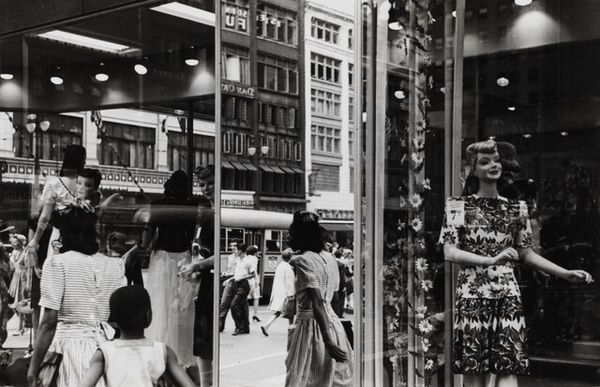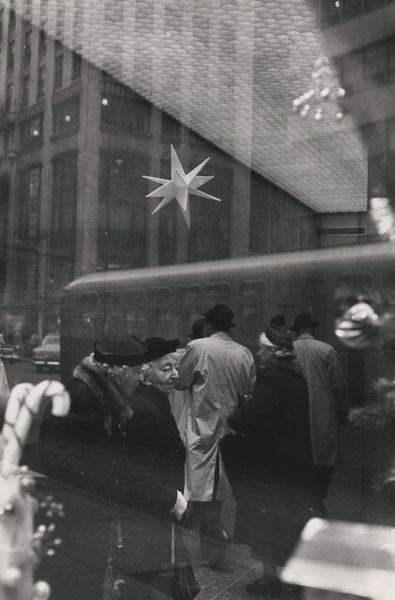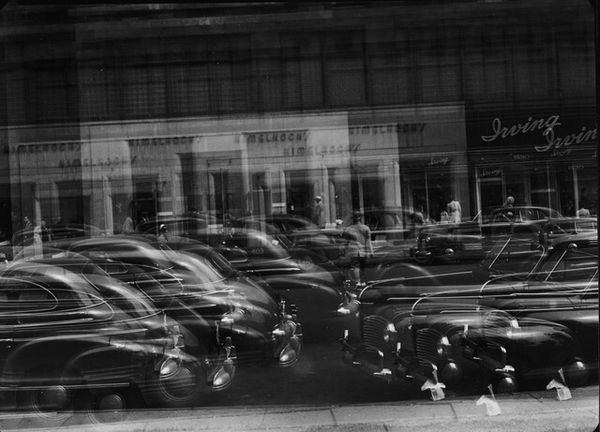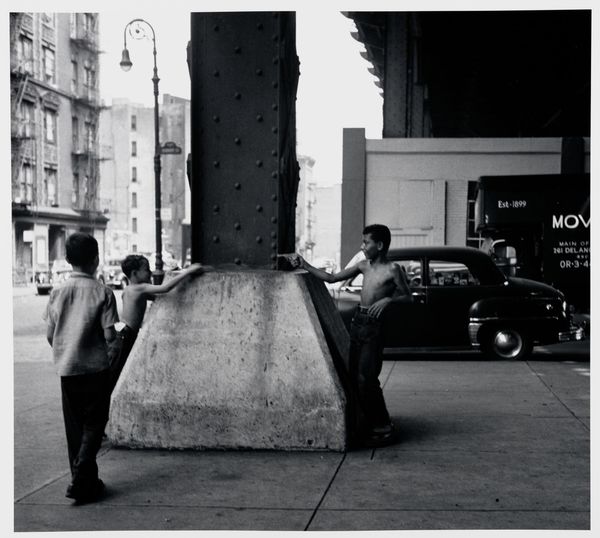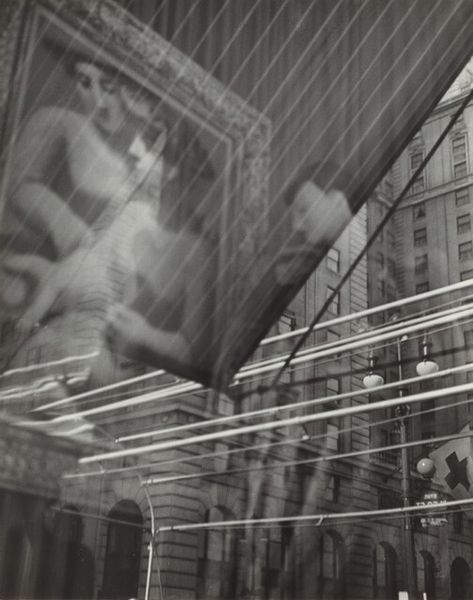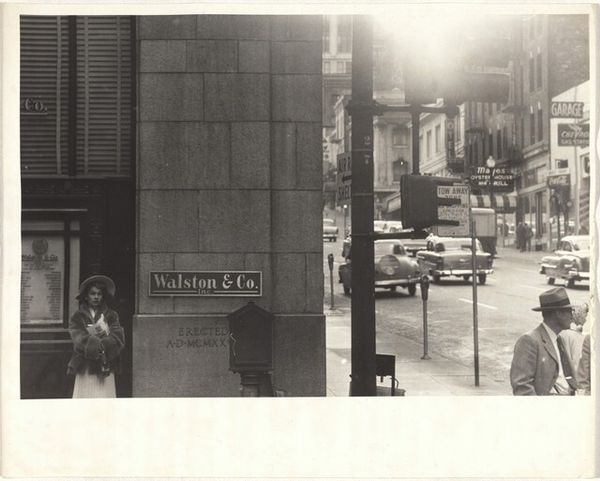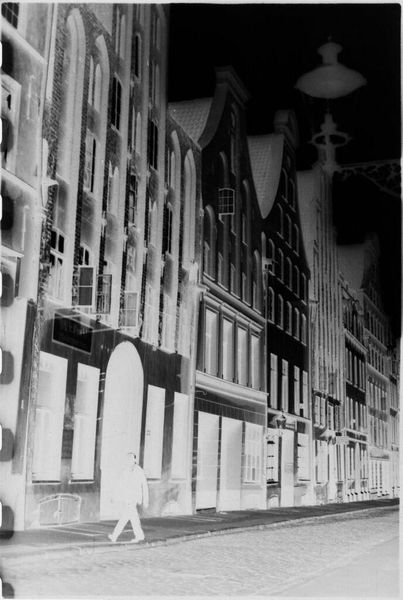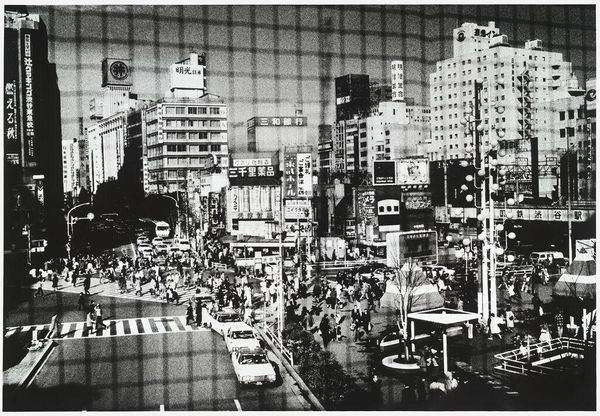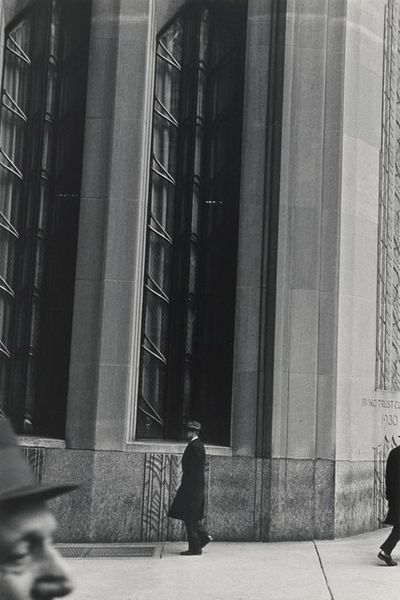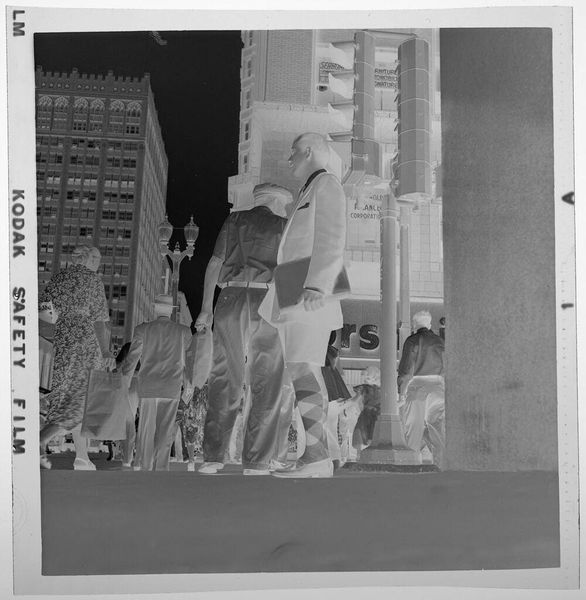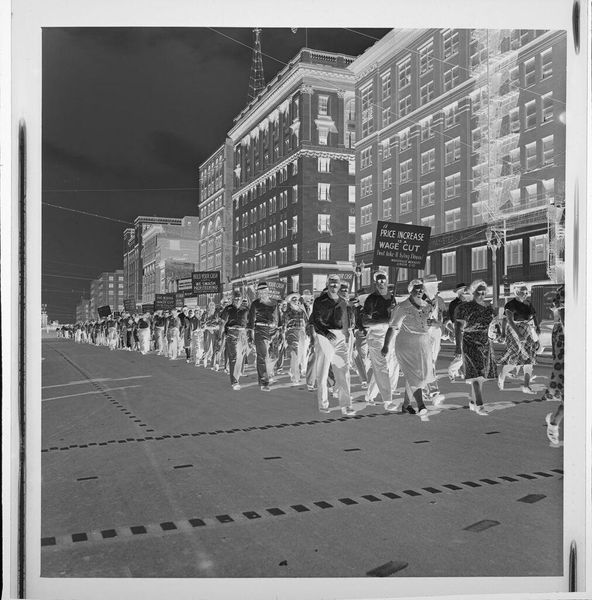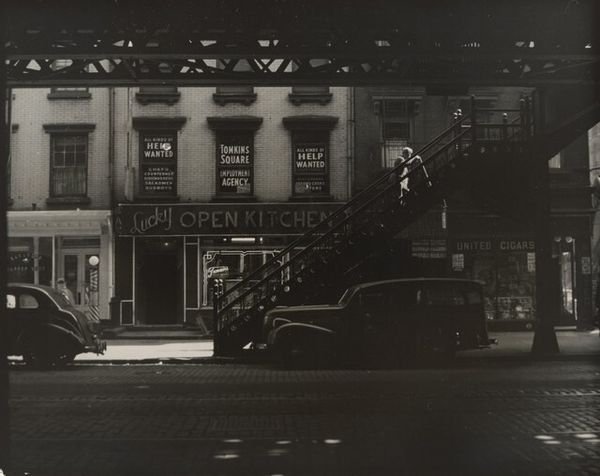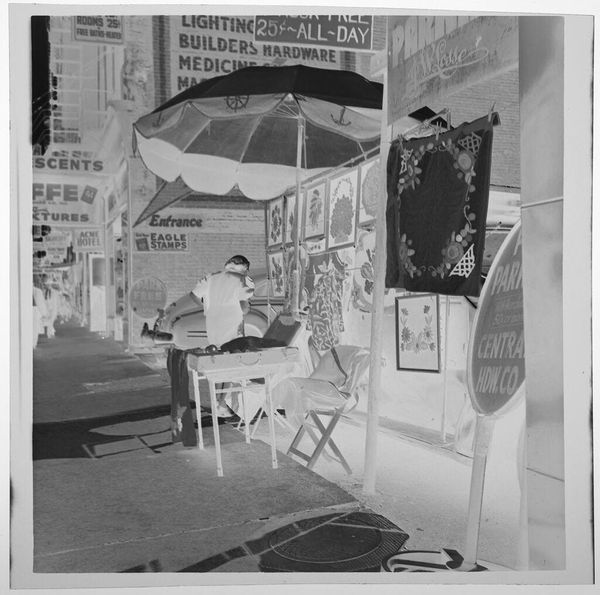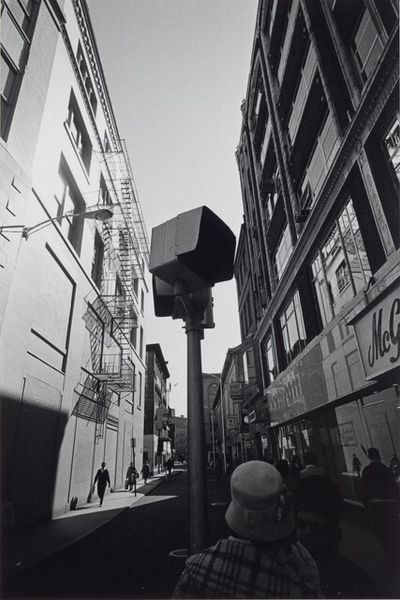
photography, gelatin-silver-print
#
sculpture
#
street-photography
#
photography
#
gelatin-silver-print
#
street photography
#
cityscape
#
realism
Dimensions: overall (sheet, trimmed to image): 7.2 x 10.8 cm (2 13/16 x 4 1/4 in.) mat: 27.94 x 35.56 cm (11 x 14 in.)
Copyright: National Gallery of Art: CC0 1.0
Curator: This gelatin-silver print by Harry Callahan, titled "Detroit," captures a street scene in 1943. Its tones are complex; there’s such a compelling juxtaposition of sharp detail and dreamy softness. What’s your initial reading? Editor: At first glance, the layers disorient me. The reflections and overlays create a world that’s both present and spectral, mirroring the transient nature of urban life, wouldn't you say? Curator: Precisely. The image demands a slower viewing. The formal tension between foreground and background flattens the space, creating a cubist-like compression. Note how Callahan plays with light and shadow, segmenting the composition into discrete pictorial fields, with shop windows serving as frames within frames. Editor: Yes, and thinking about the production itself: gelatin silver prints were the standard then. But Callahan's mastery of this process extracts a particular beauty. The materiality speaks to post-war anxieties perhaps, this sense of fleeting glimpses amidst the concrete reality of a bustling city and its consumer-driven industries? It reminds me that gelatin, after all, comes from animal collagen— connecting the urban scene back to a pre-industrial world of materiality. Curator: A rich connection, indeed! Considering the broader context of photography at the time, his image distinguishes itself through its dedication to form rather than purely documenting social realities. Callahan used the camera not only to record, but to investigate the very nature of seeing. His meticulous attention to contrast enhances the geometric organization, revealing his command over pictorial space. Editor: True. Although, if we pull back further, the photograph inevitably implicates consumer culture—with dresses and shop signs hinting towards economic forces. The labor embedded in manufacturing and maintaining those structures adds another layer—what appears as a reflection holds economic reality, the urban pulse driving postwar industry. The reflection isn't just a trick of light. Curator: A solid argument. Ultimately, "Detroit" achieves an impressive aesthetic resolution that’s evocative and formally brilliant. Editor: I concur. Looking deeper unearths a commentary on both artifice and everyday life during that era. Thanks for pointing those complexities out!
Comments
No comments
Be the first to comment and join the conversation on the ultimate creative platform.
